Making Informed Design Decisions using Slide2 | Torino-Savona Railway Landslides
In November of 2019, heavy rainfall throughout the Ligurian region of Italy caused widespread landslides and rockfalls. Among the areas affected were sections of the Torino-Fossano-Savona railway line, where landslides caused damage, temporarily suspended railway operations, and required immediate remediation to restore one part of the railway line.
Slide2 was used to back-analyze the affected areas, considering the complex geology, morphology, and hydrography, to help understand the failure mechanisms of the landslides and to identify the optimal supports that were needed to stabilize the slopes.
Torono-Fossano-Savona Landslide Hazards
Landslides occurred on two different paths of the railway between Savona and Torina, Via Altare, and Via Ferrania (Figure 1.)
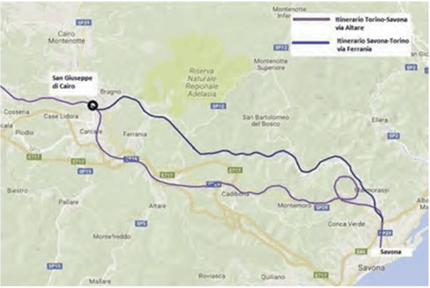
Via Altare landslides
A shallow landslide occurred near the Galleria Santuario portal (ch. 6+592 to 6+663) which included the debris topsoil and rocky subsoil. This landslide did not impact the railway line, but clogged a lateral drainage ditch, causing the outflow to be obstructed. A second landslide occurred on another section of this line, from ch. 13+610 to 13+700, on a slope above a retaining wall, where surface erosion occurred.
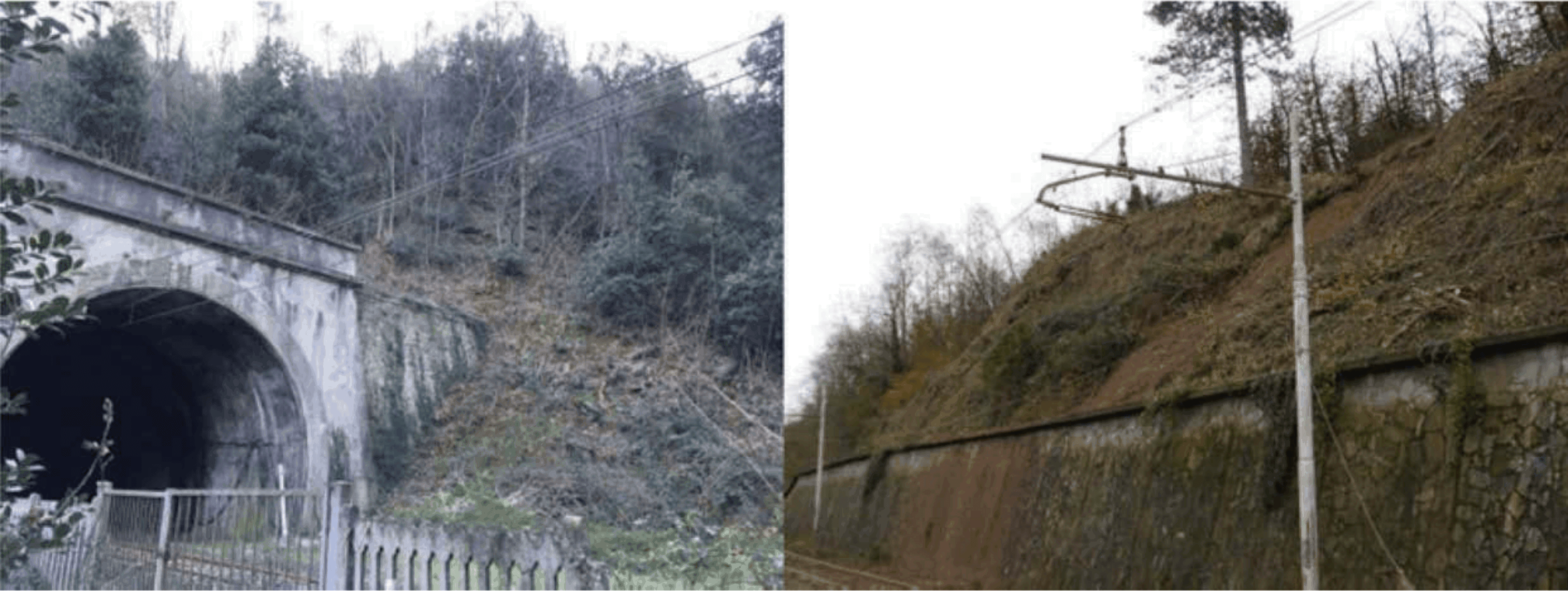
Preliminary inspections, geological studies, and geotechnical modeling were conducted to analyze these two landslides. To address the gravitational issues in shallow conditions, a 2D analysis was conducted using Slide2 and based on the obtained factor of safety value (Figure 3, left), soil-nails were selected and implemented to stabilize the slope.
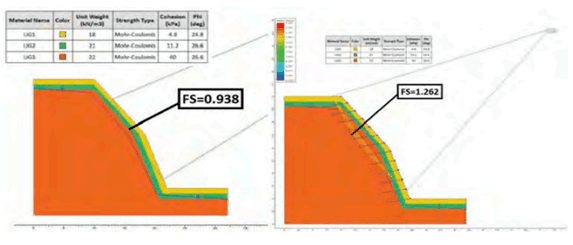
Via Ferrania landslides
Located just behind an existing building on the via Ferrania line, a translational landslide occurred. This landslide destroyed a retaining wall at the toe of the slope and disrupted the operations of the rail line.
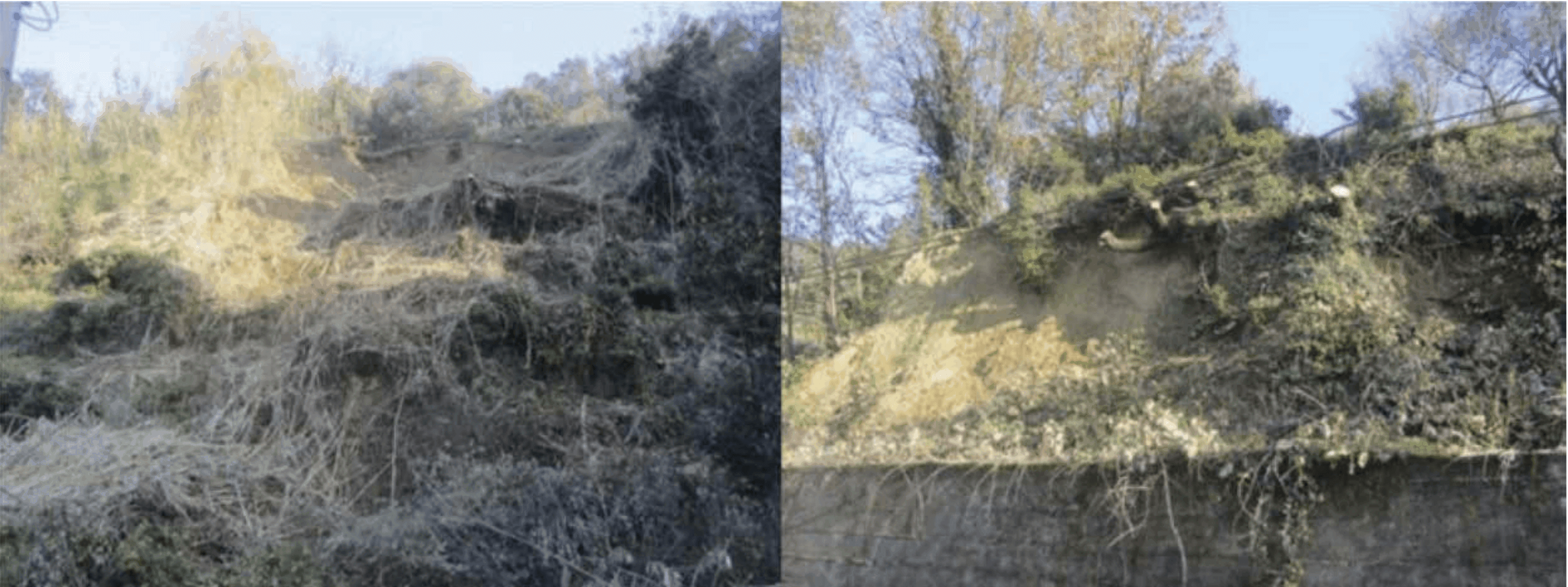
The landslide was ultimately attributed to hydraulic issues resulting from inadequate water control on the slope. After the geotechnical tests and the characterization of the soil layers, back analysis was necessary to characterize the failure surface.
- Slide2 was used to calculate the factor of safety for the failure surface using the Morgenstern-Price Method.
- The topography, soil stratigraphy, failure surface, and tension cracks were used, and three different analyses were run (example in Figure 5), allowing the parameters in a failure condition (effective cohesion c’=0) to be defined.
- The resulting critical state friction angle was 30°. Refer to Table 1 for the characterization with a Mohr-Coulomb failure criterion.
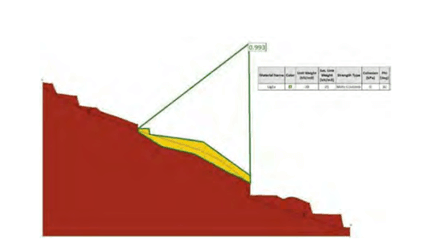
Table 1. Characteristic geotechnical parameters for the Units (UG)
γ |
c’ |
φ’ |
E’ |
k |
|||||||
γ n |
γsat |
c’r |
min |
max |
φ’r |
min |
max |
Loading |
Min |
max |
|
Geotechnical Units |
[kN/m3] |
[kPa] |
[°] |
[MPa] |
[m/s] |
||||||
UG1a (landslide) |
20 |
21 |
0 |
- |
30 |
- |
30 |
5x10-8 |
10-6 |
||
UG1b |
20 |
21 |
- |
5 |
- |
32 |
30 |
5x10-8 |
10-6 |
||
UG2 |
20 |
21 |
- |
5 |
10 |
- |
34 |
35 |
40 |
10-7 |
10-6 |
Filling |
19 |
19 |
- |
0 |
- |
35 |
30 |
- |
|||
Via Ferrania Remediation
A comprehensive design approach was adopted to stabilize the shallow failure surface. A combination of consolidation injections and installation of anchor rods were used for the consolidation of the lower wall which was still in place after the failure. This was followed by slope clearing, reprofiling and the installation of soil-nailing systems. Micropiles bulkheads, a new concrete retaining wall, drainage systems, and water control systems were also put in place to stabilize the slope in the landslide zone. Minor modifications were needed during the support design phase, the final output of which is seen below (Figure 6), however the overall execution of the construction remained on schedule and avoided further disruption to the railway line’s operations.
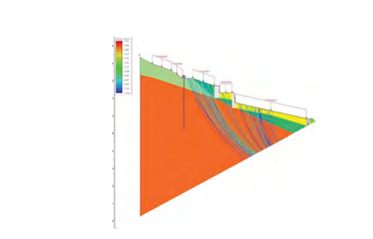
Preventing Future Landslide Hazards with Slide2
This case study demonstrates the importance of geotechnical analyses so that you can make the appropriate design decisions and ensure the stability of your slope in the future from unexpected events like long periods of heavy rainfall.
Back analysis enabled accurate modeling and assessment of the landslides along Torino-Fossano-Savona railway. By recreating the slope failure in Slide2, designers were able to understand the causes of the landslides and select the optimal remedial measures to ensure the stability of the slope.
To learn more about the landslides along the Torina-Fossano-Savona railway, read the full paper that was presented at Rocscience International Conference 2021.